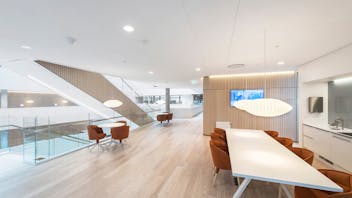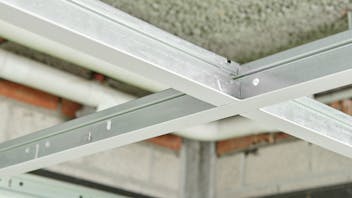Study after study shows that when ceilings with a high Noise Reduction Coefficient (NRC) rating replace ceiling materials with less acoustic absorption, people perform much better.
Regardless of whether the studies focus on learning in classrooms, healing in hospitals or working in offices, when high NRC acoustic ceilings are added, people are more comfortable, safe, productive and satisfied.
The evidence is clear. When selecting acoustic ceilings for your buildings, don’t let anything stand in the way of high-performing acoustic absorption and high-performing interior spaces.
What is acoustic absorption?
Acoustic absorption occurs when an architectural surface – such as a suspended ceiling, wall-mounted panels or carpet – converts energy in sound waves into insignificant heat energy by means of friction inside the pores of the material. The more sound energy that is absorbed by the surface, the less that is reflected back into the room as noise, reverberation, echo or flutter.
Core Topic Areas
What is speech intelligibility?
Acoustic absorption: standards, guideline, and rating systems
How is acoustic absorption defined and measured?
How to select the right Noise Reduction Coefficient (NRC) rating
Why avoid acoustic ceiling panels with NRC below 0.70?
The difference between NRC and Sabins
Choosing the right baffles or island ceiling systems
Articulation Class vs. Noise Reduction Coefficient
Final words on acoustic absorption and sound absorbing ceiling tiles
























